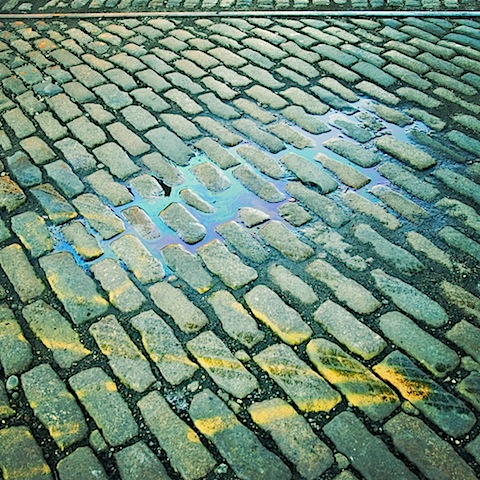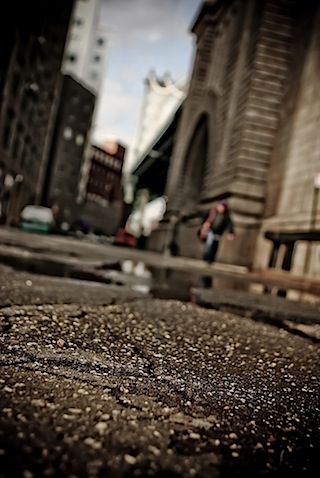What do start-ups and coffee beans have in common?
For both, the place they grow shapes who they become.

We don’t talk much about the role of place in shaping organizational identity, but the physical circumstance of where we are located as we do our work together helps to determine who we become as a company. Place shapes our character.
Terroir = Distinctiveness
For both coffee and companies, distinctive features of who they are come from the specific, physical place where they are grown. Coffee snobs, oenophiles and the French call this place terroir.
Terroir is literally the dirt in which coffee plants are grown. The soil, the minerals, the decomposing leaves, the orientation of the sun, the slope, and the wind influence how the plants grow, which of their features mature and which do not, and ultimately how the plants perform to create a product. Two beans may be the “same” variety, but when they are grown in different dirt, in different places, how do they taste? Different. Why?
Because place matters.
Terroir matters to companies, too. Whether it’s the location of the founders’ parents’ garage or the co-working space where the team meets, the place where your company is planted influences how you feel about yourselves as a group and influences who you become.
We tend to forget the role of place, of physicality, of geographic circumstance, because so much of our work is digitized, and in that way removed from dirt, from damp, from light, and from elevation. We work internationally, across timelines, and even across language barriers, to the point where it all feels like the same black words in the same white box on the same grey-blue screen, no matter where you are.
And, when we do think about the effect of “place” on an organization’s identity or character, we think about the ways that the organization arranges their offices, or designs their new headquarters. These deliberate decisions telegraph and reinforce the ways that organizations want to shape their sense of self.

When I talk about ‘place’ though, I’m thinking not only about the ‘built environment’ – the physical locations that we rent, furnish, and decorate deliberately – but also the physical environment that is simply there. I’m thinking about the subway stations, the pavement, the streetscape, the falafel truck on the far corner, the wind, the shadows, the noise, the smell, and their effects on each other.
The other people in the place matter too — not so much as personalities, but as co-presence.
You’re not the only entrepreneur, not the only team, walking in these shadows, feeling that dampness, stepping into this building that was a shirt factory before you planted your computers there. People in other companies near you also lose their breath climbing the stairs out of the subway, inhale the aromas of the falafel truck, and even on the hottest summer day feel braced by the cool dampness under the overpass.
Each person experiences this place in his or her own way, but nonetheless you all are responding to the physicality of that shared place.
The place tells us where we are, and our responses to it tell us who we are.
On Washington Street on a rainy day, you’re battered by the wind off the East River. Standing up to it, you feel resistant, oddly stronger, able to handle the against-the-current trajectory a start-up requires. The unevenness of the cobblestone pavement of the side street, the dips and edges in the pine planks on the workspace floor, require that you rebalance with every step. Each tiny re-positioning reminds you to adjust in real time, to be flexible, to stay steady while in motion.
Place is, quite literally, a way that we and our companies can stay grounded.
- Place gives us somewhere to feel centered, somewhere to start from, somewhere to return to.
- Physical places hold us, they are containers for our together-ness.
- Places help us mark who is ‘us’ and who is ‘not us’.
- Places each have a resonance, a unique energy that we can feel. We can tap into that energy to reinforce our own, we can tap into this energy to release ourselves from psychic constraints.
- Places have rhythms, cycles, and seasons that can help set a tempo to coordinate our work.
- Places connect us to the people who were there before us and help join us to the timeline of progress.
Of course, there are other forces shaping an organization’s character more powerfully than place. From the founders’ personality to the talents of the group to the type of business itself, there is much we can use, easily, to explain why we are who we are.

With place, though, the influence is usually sub-liminal, under our consciousness and far from our words.
Instead of being something we know, place is usually something we feel.
The ways that we stand and move in physical space and the ways we collectively respond to the physical texture around us work to connect our cognitions and our emotions. Even for people and companies that don’t want to pay attention to their place, their thoughts and feelings in the space anchor their experience of who they are.
Every organization has a certain ‘je ne sai quoi’, a uniqueness and difference that can’t be put into words.
The Etsy grown in Brooklyn’s Dumbo is different from the Etsy that would have grown in Austin’s SoCo, or that could have grown in Vancouver’s Gaslight. The difference between the three possibilities– with the same founder, the same talents, and the same business model — finds its source in the unique place. Why? Because it is that place, with all its specific feelings, thoughts, and actions, where the core members of the organization experience being together.
A few weeks ago I went to visit a company just blocks away from where I lived just out of college. A few decades later, the neighborhood has more upscale shops, more business activity, fewer homeless people, and no broken windows. But the place is largely the same — still damp, still metallic, still punctuated by the constant rumble of the trucks on the BQE.
Still lifted by the arch of the bridge.
Still raw, still elevating, still inspiring.
And the companies growing there?
Rooted there, to be shaped by that very place.
Images from Flickr:
Hit the Road Some rights reserved by Pensiero
Dumbo Manhattan Bridge Some rights reserved by wallyg
Water under the Bridge, Some rights reservedby moriza
 I am an organizational consultant, change advocate, and organizational identity/reputation scholar with a PhD in leadership & organizations. I research, write about, and consult with organizations on the relationships between organizational identity, actions, and purpose. I teach Technology Management, part-time, at Stevens Institute of Technology.
My current research focuses on how social technologies in the workplace can drive organizational change, generate meaning, and catalyze purpose. See the
I am an organizational consultant, change advocate, and organizational identity/reputation scholar with a PhD in leadership & organizations. I research, write about, and consult with organizations on the relationships between organizational identity, actions, and purpose. I teach Technology Management, part-time, at Stevens Institute of Technology.
My current research focuses on how social technologies in the workplace can drive organizational change, generate meaning, and catalyze purpose. See the 
Comments on this entry are closed.